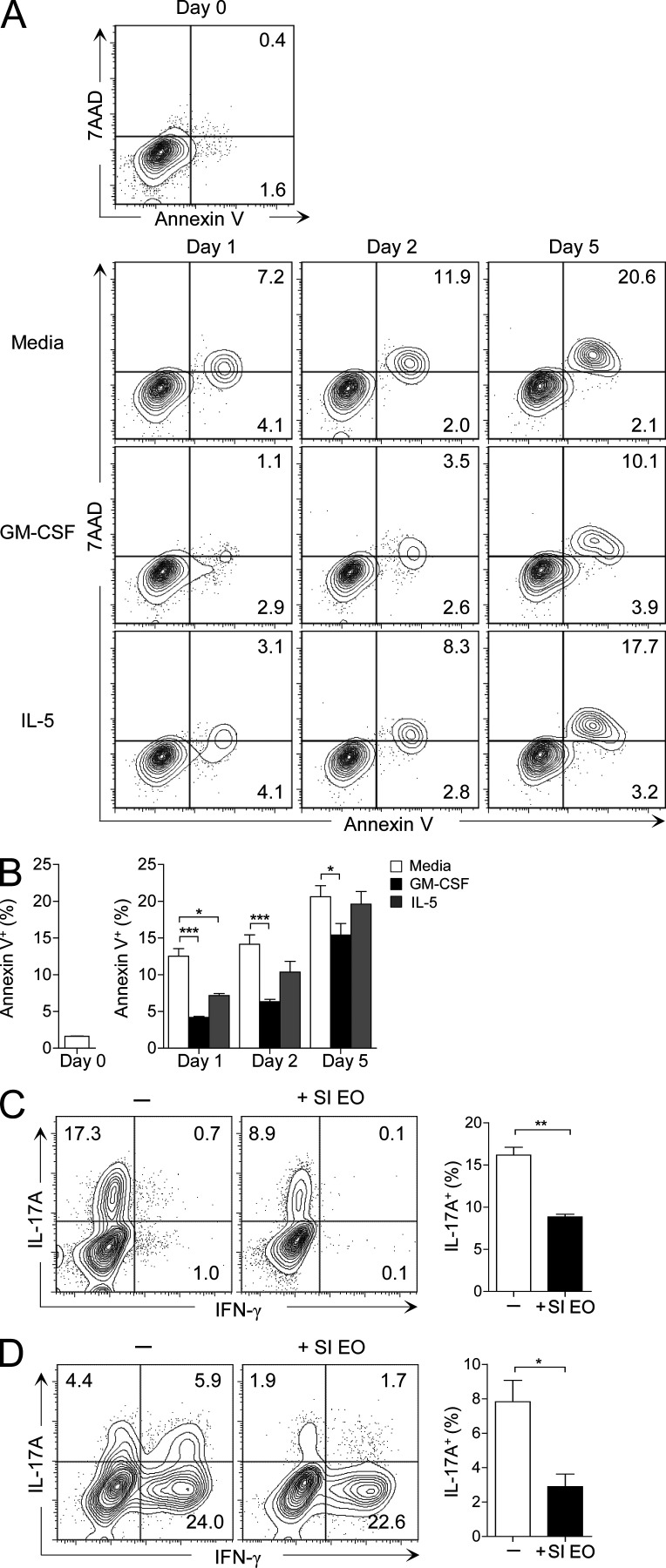Figure 3.
Small intestinal eosinophils suppress Th17 cells in vitro. (A) Small intestinal LP cells were cultured for 1, 2, and 5 d with or without GM-CSF (10 ng/ml) or IL-5 (10 ng/ml), and then stained with 7AAD and Annexin V for analysis of cell viability. FACS plots show eosinophils (MHCII−Siglec-F+ cells) and are representative of two independent experiments. (B) Bar graphs show the mean ± SEM of the percentage of Annexin V+ eosinophils. *, P < 0.05; ***, P < 0.001 (two-way ANOVA followed by Bonferroni post-test). (C) LN-derived naive CD4+ T cells (105) and splenic DCs (104) were cultured with or without small intestinal eosinophils (SI EO; 105) in the presence of soluble anti-CD3/CD28 (5 and 2 µg/ml, respectively), neutralizing anti–IFN-γ (5 µg/ml), neutralizing anti–IL-4 (5 µg/ml), neutralizing anti–IL-2 (2.5 µg/ml), GM-CSF (10 ng/ml), TGF-β (5 ng/ml), IL-6 (20 ng/ml), IL-1β (20 ng/ml), and IL-23 (10 ng/ml). On day 5, the cells were collected and intracellular cytokine staining for IFN-γ and IL-17A in CD4+ T cells was analyzed by flow cytometry. (D) Small intestinal CD4+CD25− T cells (105) and splenic DCs (104) were cultured with or without small intestinal eosinophils (105), as in C, except for the omission of IL-6. On day 5, the cells were analyzed for the production of IFN-γ and IL-17A, as in C. FACS plots are gated on CD4+ T cells and are representative of at least three similar experiments. Bar graphs show the mean ± SEM. *, P < 0.05; **, P < 0.01 (unpaired Student’s t test).

